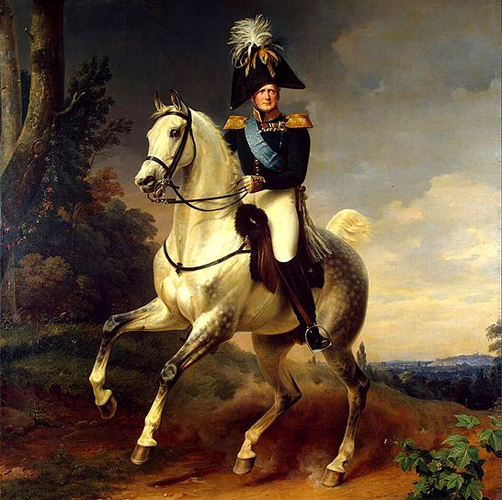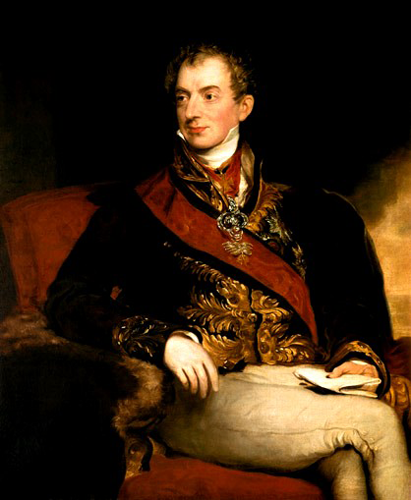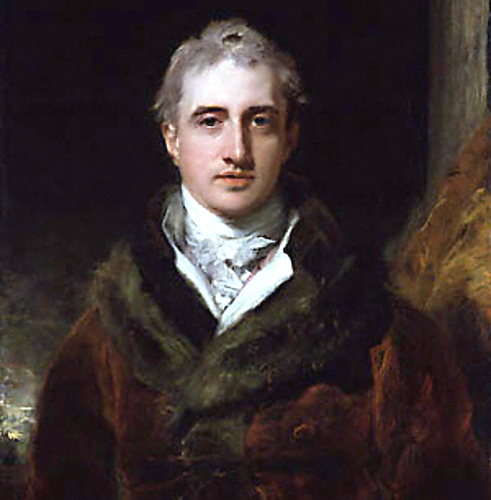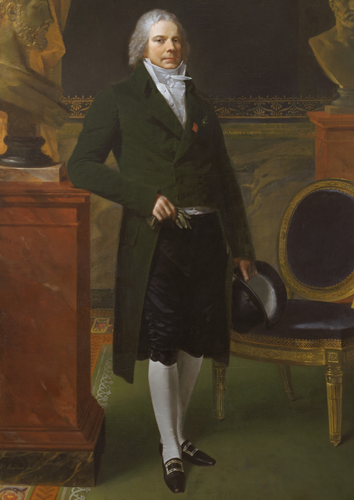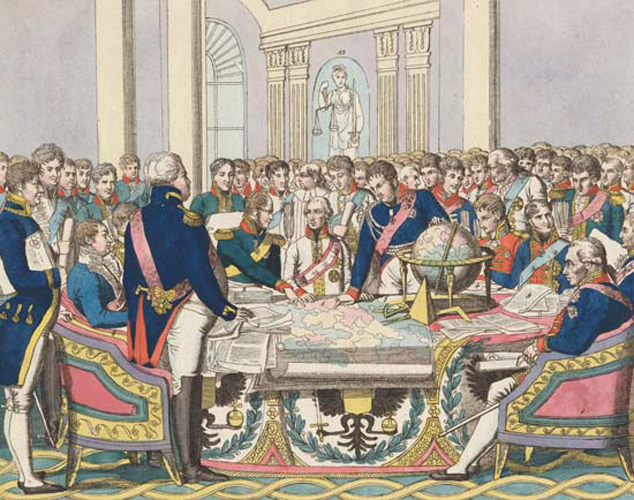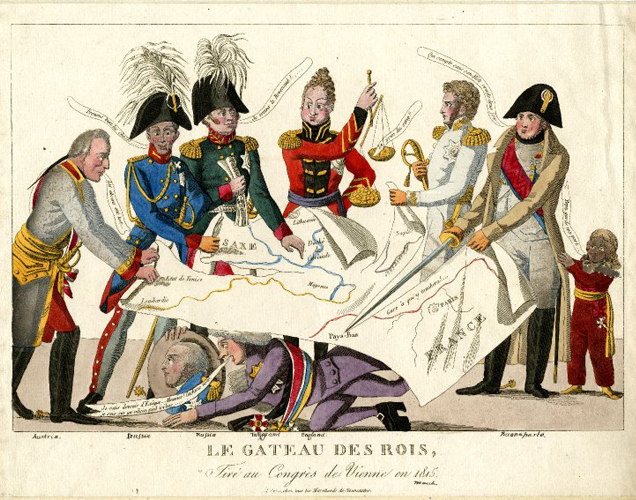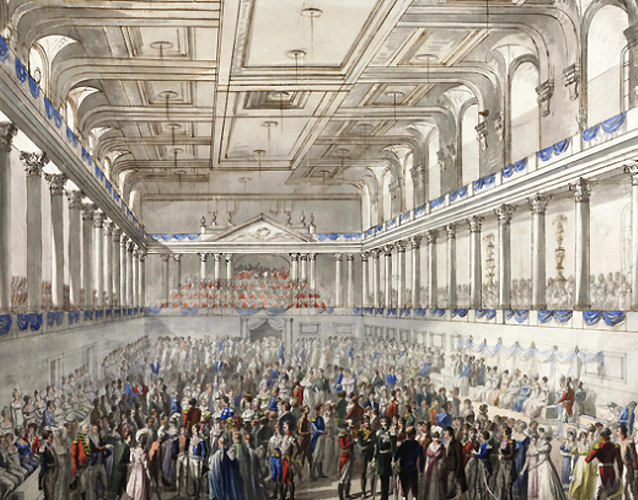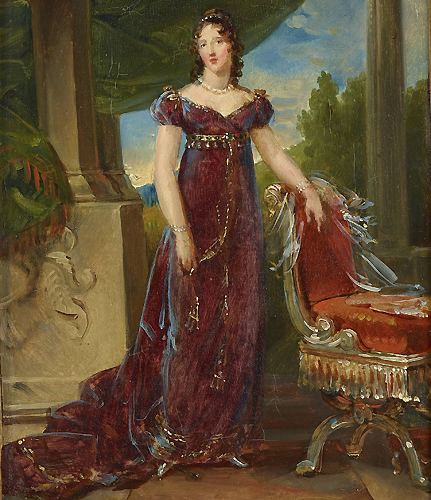The Congress of Vienna
Much of the action in The Cocoa Conspiracy, my second Lady Arianna mystery, takes place at the Congress of Vienna. Convened to reorder Europe after the defeat of Napoleon, it was also meant to be a grand ending of sorts—the rulers and diplomats from all over Europe were looking to close the book on the strife and upheavals of the Napoleonic Wars and begin a new chapter of world peace. (In many ways, it was the precursor to the United Nations.) Countless books have been written on the complex negotiations and their ramifications (Henry Kissinger wrote his PhD thesis on the Congress) so I won’t attempt to delve into its nuances. Suffice it to say, it was an extraordinary attempt to consider a vastrange of issues, both political and social, and to structure a “balance of power” to ensure that there would not be another world war. (Scroll your cursor over the bottom of the picture to see the caption.)
Some of the major issues had to do with East Europe—what to do with the various pieces of Poland that had been carved up during the wars; how to deal with Saxony and Prussia; how to keep Russia from becoming too powerful. And then there was the rising nationalism in the Italian peninsula and the Balkans to consider. All these questions of borders and national identity were incredibly important, of course. But what I found fascinating was that the leaders of Europe also understood that issues such as religious freedom, free press and individual rights were very critical in establishing stability and peace throughout the regions. And so there were delegations not just from countries, but from “special interest” groups (much like our modern day lobbyists) The range included prominent Jewish leaders, anti–slavery organizations and a group of publishers who wanted laws passes to protect intellectual property!
The cast of colorful real-life characters at the Congress of Vienna makes fiction appear, well, awfully tame. Prince Metternich, the powerful Austrian Foreign Minister who was a guiding force of the Congress of Vienna, was a savvy negotiator, a polished diplomat—and a rakish lady’s man. He was madly in love with the Duchess of Sagan, who had come to the city in order to court favor with the Tsar of Russia . . . (warning: get out your notebooks, for the tangle of love affairs and dalliances gets quite complicated.) Alas, poor Metternich. He spent much of his time writing passionate love letters to the Duchess when he should have been reading treaties and aligning borders . . . a fact that his canny rivals took advantage of.
And then there was Tsar Alexander I of Russia. Charismatic, complex and mercurial, Alexander was determined to make Russia a force to be reckoned with on the European stage. It seems he was also determined to seduce every female within arm’s reach. One of my favorite anecdotes involves him seeing the wife of a prominent diplomat at a party. As she was alone, he sidled up and asked if he could occupy her husband’s place for the evening—to which she replied coolly, “Does Your Majesty take me for a province?” In addition to the opposite sex, Alexander also loved the rich food and wines of Vienna—he had to have a whole new wardrobe sent from St. Petersburg because he gained so much weight partying every night!
The ladies were equally interesting. A noted beauty, the Duchess of Sagan attracted an impressive array of influential men to her weekly salons. As did her rival, Prince Bagration, who was known as the Naked Angel of the North because she wore only white muslin, well damped to cling to her shapely curves. The Duchess’s younger sister Dorothee—who was Talleyrand’s niece by marriage—served as the prince’s hostess, stirring rumors as to what else was going on inside the Kaunitz Palace . . .
As for entertainments . . . Well, trust me, there probably wasn’t a more “alive” spot on the planet than Vienna during that time. Yes, the emperors, kings, princes, margraves, powerful government ministers and their entourages had come to the Austrian capital to make peace . . . but they had also come to make love (not necessarily in that !) In other words, they had come not just to work but to play! And play they did! Glittering balls, sumptuous banquets, fanciful medieval jousts, spectacular fireworks—the daily list of extravagant entertainments for the participants was mind-boggling. . Here are a few of my favorites:
The Emperor’s Ball
The Emperor of Austria hosted a welcoming ball for the international array of royalty and diplomats . . . One of the “decorations” was having the Duchess of Sagan and 23 of her friends come dressed as the Four Elements: Six ladies dressed as Water, wearing blue and green dresses festooned with pearls, coral and seashells. Six wore bright red dresses and carried torches to represent Fire. Six wore thin, nearly transparent gauzy dresses and wore wings to be Air. And lastly, representing Earth, the Duchess and her group wore brown velvet dresses and headdresses made out of golden baskets filled with jeweled fruit!
The Carousel
This recreation of a medieval joust, held at the famous Spanish Riding School (where the white Lipizzaner horses traditionally were trained) was perhaps the most spectacular party of them all. Glittering chandeliers and thousands of candles lit the indoor arena. At one end was an imperial grandstand with gilded chairs for all the royal guests. The other end was for the “Queens of Love,” 24 ladies who had been selected to be the tournament’s belles d’amour for the 24 “knights” who, mounted on matching black chargers, jousted to win their favor. Around 1200 spectators, including ambassadors, diplomats and high-ranking officials packed the remaining seats, and the display of jewelry and sumptuous dresses worn by the ladies was said to be dazzling. After a mock combat with lances (only one casualty resulted when Prince Liechtenstein was knocked unconscious from his horse) the crowd returned to the Emperor of Austria’s palace for a banquet where acrobats, minstrels and jugglers entertained the guests.

